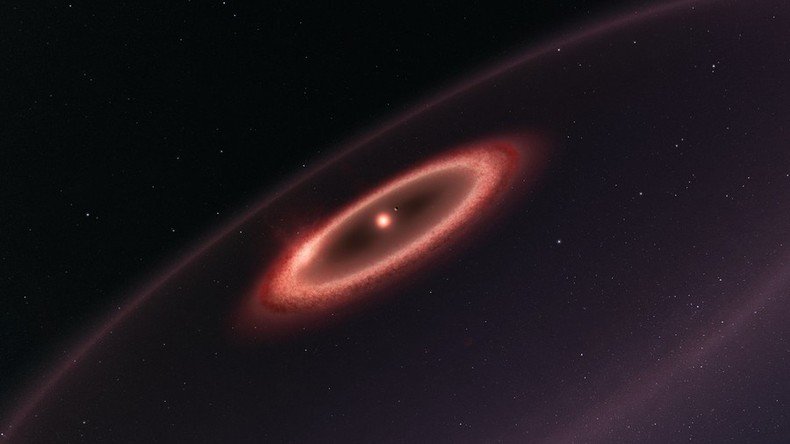Star closest to our Sun may have ‘elaborate planetary system’

Proxima Centauri, the star closest to our sun, may have an “elaborate planetary system,” according to new observations that detected cold cosmic dust in the region.
Last year, the European Space Agency discovered the rocky exoplanet Proxima B orbiting within the habitable zone of the star, but NASA later dashed hopes that the planet could be habitable.
New observations from the ALMA Observatory in Chile suggest now that there is more to this system than just a single planet and there could be in fact several more hidden planets surrounding our neighbor star.
Bad news for #ProximaB: Red dwarf flares jeopardize ‘habitability’ of planet (VIDEO) https://t.co/TnTtgZIAUYpic.twitter.com/mLtAoLmNL2
— RT (@RT_com) February 9, 2017
ALMA data revealed emission from clouds of cold cosmic dust around the star, suggesting the possible presence of an elaborate planetary system, according to the ESO.
“The dust around Proxima is important because, following the discovery of the terrestrial planet Proxima B, it’s the first indication of the presence of an elaborate planetary system, and not just a single planet, around the star closest to our Sun,” lead author of the study, Guillem Anglada, from the Instituto de Astrofísica de Andalucía (CSIC), Granada, Spain, explained.
There are also hints in the ALMA data of another belt of even colder dust about ten times further out.
Scientists say the possibility of an outer belt is intriguing, considering its very cold environment far from a star that is cooler and fainter than the Sun.
Both belts are much further from Proxima Centauri than the planet Proxima B, which orbits at just 4 million kilometres from its parent star
“This result suggests that Proxima Centauri may have a multiple planet system with a rich history of interactions that resulted in the formation of a dust belt.”
Researchers say further study is necessary to get amore detailed picture of Proxima Centauri’s planetary system and determine possible locations of the unidentified additional planets.
READ MORE: Alien-hunters crowdsource for all-seeing telescope to probe Proxima b












